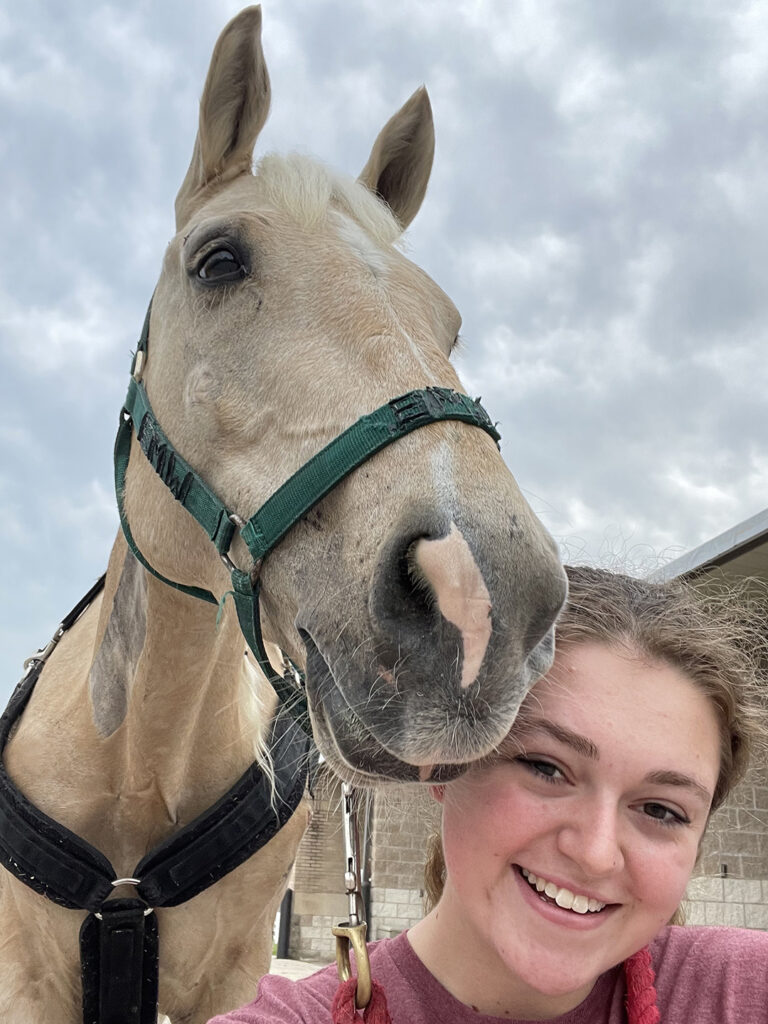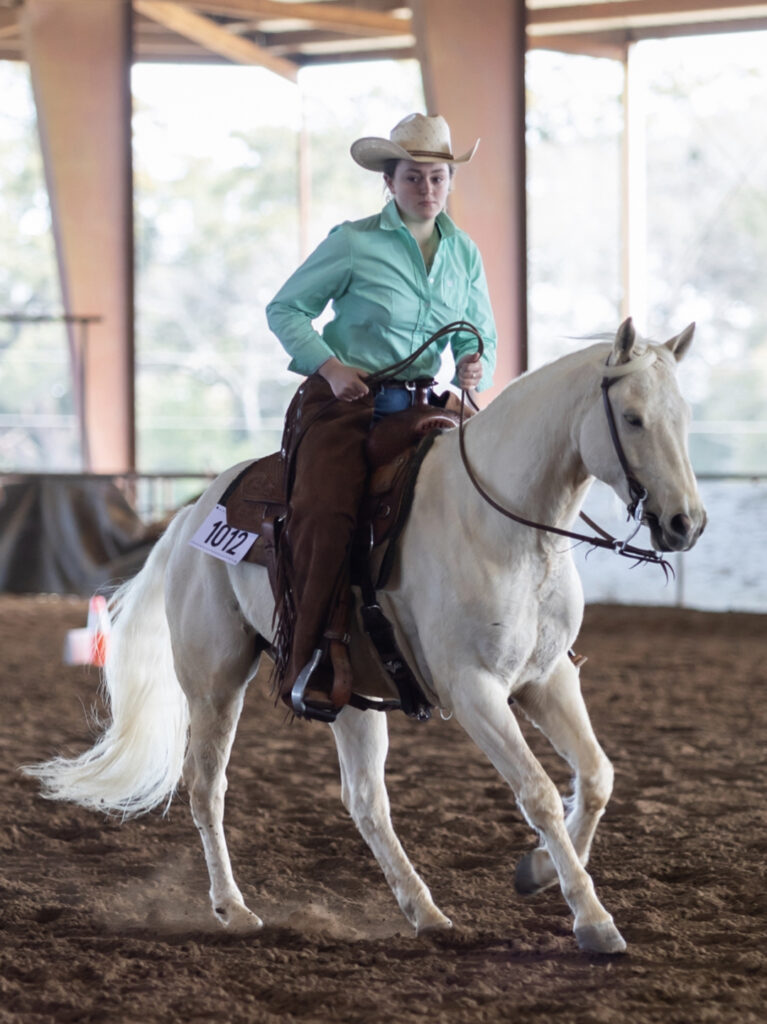Texas A&M Veterinarians Help Horse Recover From Life-Threatening Botulism
Story by Courtney Price, VMBS Communications

Thanks to the quick thinking of veterinarians from the Texas A&M Large Animal Teaching Hospital (LATH), a horse named Tesoro is back on his feet after a frightening case of botulism, a disease not common in Texas.
Sydney Reed, a pre-veterinary animal science student at Texas A&M University, purchased Tesoro, a quarter horse gelding, as part of her side business training and selling young horses. However, Tesoro became the exception.
“He was supposed to be a 60-day project,” Reed said. “But I still have him five years later.”
The two have developed a special bond over the years.
“Anyone who’s met him will tell you he has a personality,” she said. “He’s very particular. When he eats a cookie, he needs your hand there the whole time because he wants to bite it into smaller chunks. And when we were training, he never bucked, kicked or bolted. He’s always been very caring.”
Signs Of Illness
Back in March, Reed got a call from her horse trainer that Tesoro was down and things were beginning to look bad for him.
The news came after a week of the horse showing signs of lameness. Tesoro received blood tests and X-rays, but the results left more questions than answers.
While his tests came back inconclusive, Tesoro continued to behave strangely, despite his local veterinarian administering steroids and other broad treatments used in similar situations.
The night Reed got the call from her trainer, she raced over to be with Tesoro.
“All night, 12 hours in the rain, I laid out there with him,” Reed said, adding that she stayed by Tesoro to take vitals and keep him warm.
When morning came, Tesoro’s veterinarian recommended that Reed take Tesoro to Texas A&M, where a team of veterinarians could work to uncover what was causing his symptoms.
“When he came to us, he was in a critical state,” said Dr. Alexis Jennings, the veterinary resident working on Tesoro’s case at the LATH. “He was unresponsive and showed signs of muscle loss.”
The team soon learned that Tesoro had previously shared a training facility with another Texas A&M patient, a horse who had signs of botulism.
“Botulism is caused by bacteria,” Jennings explained. “It’s not super common in this part of the country, but we do see cases here. Most of the time in adult horses, it’s caused by feed contamination.”
Rare Treatment

The bacteria that cause botulism can grow in hay and grain that hasn’t dried properly. When horses eat the contaminated grain, they ingest spores that release a paralyzing toxin.
“There’s a very narrow window of getting the treatment started,” Jennings said. “Horses are designed to be standing most of the time, so whenever they are down for an extended period, their muscles and nerves will become permanently damaged. Just being down can cause a lot of issues that are difficult to recover from.”
Since botulism targets the nerves that horses use to stand, it’s a serious condition.
“We don’t always have botulism on our list right away because the signs are non-specific,” Jennings said. “Plus, it takes a very small amount of the toxin to cause the clinical disease. By the time we suspect botulism, there’s usually already muscle paralysis, which is irreversible.”
But as soon as the veterinarians connected Tesoro to another suspected botulism case, they gave him special plasma from a horse that had been immunized against the bacteria.
Not every veterinary clinic carries this rare treatment.
“We were lucky to have some onsite that we could get to him quickly,” Jennings said.
After several months of the botulism treatment, Tesoro began to recover, eventually to the point where he was standing again.
Thanks to the quick response of the LATH veterinary team — which also included Drs. Amanda Trimble, Elizabeth Rumfola, Shannon Darby and Sally Alpini, as well as countless dedicated technicians and veterinary students — Tesoro continues to recover at Payne Equine, a rehabilitation facility owned by Dr. Corey Payne ’21.
“I’m sure the vets at Texas A&M can take care of absolutely anyone,” Reed said. “Tesoro wouldn’t be alive without them.”
###
For more information about the Texas A&M College of Veterinary Medicine & Biomedical Sciences, please visit our website at vetmed.tamu.edu or join us on Facebook, Instagram, and Twitter.
Contact Information: Jennifer Gauntt, Director of VMBS Communications, Texas A&M College of Veterinary Medicine & Biomedical Sciences, jgauntt@cvm.tamu.edu, 979-862-4216


